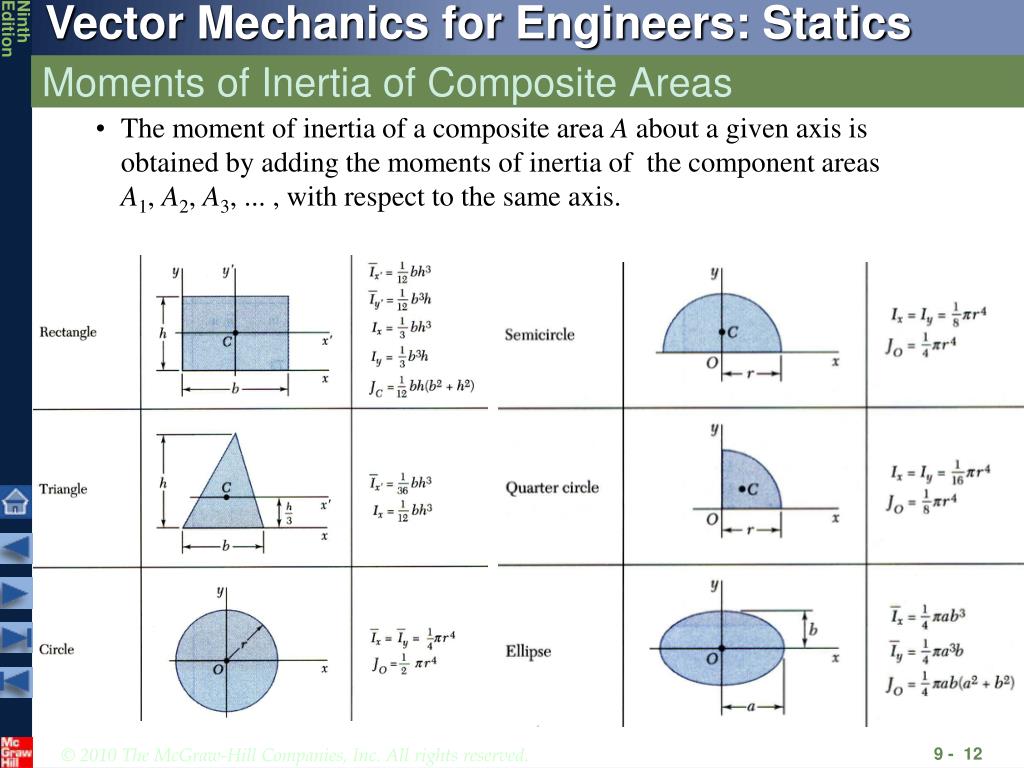

The moment of inertia of a collection of masses is given by: I miri 2 (7. Every rigid object has a denite moment of inertia about a particular axis of rotation. The moment of inertia plays the role in rotational kinetics that mass (inertia) plays in linear kinetics-both characterize the resistance of a body to changes in its motion. The moment of inertia, I, is a measure of the way the mass is distributed on the object and determines its resistance to angular acceleration. The surface area of a cylindrical shell is A. m 2) in SI units and pound-foot-second squared (lbf The moment of inertia of an oxygen molecule about an axis through the centre of mass and.Moments of inertia may be expressed in units of kilogram metre squared (kg The amount of torque needed to cause any given angular acceleration (the rate of change in angular velocity) is proportional to the moment of inertia of the body. Because r is the distance to the axis of rotation from each piece of mass that makes up the object, the moment of inertia for any object depends on the chosen axis.

for all the point masses that make up the object. The polar section modulus (also called section modulus of torsion), Z p, for circular sections may be found by dividing the polar moment of inertia, J, by the.
Calculate moment of inertia of a circle free#
When a body is free to rotate around an axis, torque must be applied to change its angular momentum. We defined the moment of inertia I of an object to be. The polar moment of inertia may be found by taking the sum of the moments of inertia about two perpendicular axes lying in the plane of the cross-section and passing through this point.

Its simplest definition is the second moment of mass with respect to distance from an axis.įor bodies constrained to rotate in a plane, only their moment of inertia about an axis perpendicular to the plane, a scalar value, matters. The object in the diagram below consists of five thin cylinders arranged in a circle. The moment of inertia of a point mass is. First let us put some parameters on the problem. The moments of inertia for a cylindrical shell, a disk, and a rod are MR2,, and respectively. The moment of inertia of a rigid composite system is the sum of the moments of inertia of its component subsystems (all taken about the same axis). For a right circular cone of uniform density we can calculate the moment of inertia by taking an integral over the volume of the cone and appropriately weighting each in nitesimal unit of mass by its distance from the axis squared. In this equation, is the angular velocity of the rotating object and mr2 is.
Calculate moment of inertia of a circle how to#
It is an extensive (additive) property: for a point mass the moment of inertia is simply the mass times the square of the perpendicular distance to the axis of rotation. To see how to calculate mass moment of inertia (MMI), lets review what we. It depends on the body's mass distribution and the axis chosen, with larger moments requiring more torque to change the body's rate of rotation. The moment of inertia, otherwise known as the mass moment of inertia, angular mass, second moment of mass, or most accurately, rotational inertia, of a rigid body is a quantity that determines the torque needed for a desired angular acceleration about a rotational axis, akin to how mass determines the force needed for a desired acceleration. War planes have lesser moment of inertia for maneuverability.


 0 kommentar(er)
0 kommentar(er)
